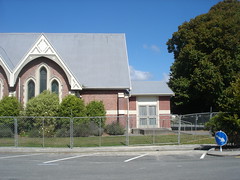
Search
Images for Community; more images...
QuakeStory 416
Articles, UC QuakeStudies
A story submitted by Lindsay McKenzie to the QuakeStories website.
Ruth Gardner's Blog 01/08/2012: Blueprint Brain-teasers
Articles, UC QuakeStudies
An entry from Ruth Gardner's blog for 1 August 2012 entitled, "Blueprint Brain-teasers".
Ruth Gardner's Blog 16/09/2012: Freedom on Fitzgerald?
Articles, UC QuakeStudies
An entry from Ruth Gardner's blog for 16 September 2012 entitled, "Freedom on Fitzgerald?".
Ruth Gardner's Blog 26/04/2013: Fond Farewells
Articles, UC QuakeStudies
An entry from Ruth Gardner's blog for 26 April 2013 entitled, "Fond Farewells".
QuakeStory 239
Articles, UC QuakeStudies
A story submitted by Val Smith to the QuakeStories website.
QuakeStory 192
Articles, UC QuakeStudies
A story submitted by Anonymous to the QuakeStories website.
QuakeStory 202
Articles, UC QuakeStudies
A story submitted by Elizabeth to the QuakeStories website.
QuakeStory 201
Articles, UC QuakeStudies
A story submitted by Robyna Smith to the QuakeStories website.
QuakeStory 162
Articles, UC QuakeStudies
A story submitted by Rebecca to the QuakeStories website.
QuakeStory 129
Articles, UC QuakeStudies
A story submitted by Sarah Gallagher to the QuakeStories website.
QuakeStory 131
Articles, UC QuakeStudies
A story submitted by Katie to the QuakeStories website.
QuakeStory 37
Articles, UC QuakeStudies
A story submitted by Adam to the QuakeStories website.
QuakeStory 30
Articles, UC QuakeStudies
A story submitted by Allie to the QuakeStories website.
QuakeStory 78
Articles, UC QuakeStudies
A story submitted by Keryn to the QuakeStories website.
Christchurch Press 10 September 2010: Section B, Page 10
Articles, UC QuakeStudies
Page 10 of Section B of the Christchurch Press, published on Friday 10 September 2010.
Introducing One Voice Te Reo Kotahi (OVTRK): January 2014
Articles, UC QuakeStudies
A pdf copy of a document describing One Voice Te Reo Kotahi.
Outdoor Music Room Photograph 3
Images, UC QuakeStudies
A photograph of volunteers creating the Outdoor Music Room.
We Lived Here: Oxford Terrace Photograph 003
Images, UC QuakeStudies
A photograph of the front gate of Robin Duff's house at 386 Oxford Terrace.
We Lived Here: Oxford Terrace Photograph 004
Images, UC QuakeStudies
A photograph of a flower in Robin Duff's garden at 386 Oxford Terrace.
We Lived Here: Oxford Terrace Photograph 074
Images, UC QuakeStudies
A photograph of the hallway of Donna Allfrey's house at 406 Oxford Terrace.
We Lived Here: Oxford Terrace Photograph 146
Images, UC QuakeStudies
A photograph of the kitchen of Robin Duff's house at 386 Oxford Terrace.
We Lived Here: Oxford Terrace Photograph 168
Images, UC QuakeStudies
A photograph of the site of Donna Allfrey's demolished house at 406 Oxford Terrace.
Photograph of Gap Filler project 13 (42)
Images, UC QuakeStudies
A volunteer sketching the words of a mural onto the wall of a building in Sydenham.
Photograph of Gap Filler project 13 (60)
Images, UC QuakeStudies
The finished 10m2 office building, soon to be the Gap Filler Headquarters in Sydenham.
Photograph of Gap Filler project 13 (58)
Images, UC QuakeStudies
Recycled metal sheets nailed to the sides of the 10m2 office building for insulation.
Photograph of Gap Filler project 13 (19)
Images, UC QuakeStudies
The Gap Filler Headquarters 10 square metre office, with the SYDM QR code in the window.
We Lived Here: Oxford Terrace Photograph 150
Images, UC QuakeStudies
A photograph of Pomeroy's Pub, taken from Oxford Terrace, across the Avon River.
Jennifer Middendorf's Blog 11/01/2013: Only slightly loco
Articles, UC QuakeStudies
An entry from Jennifer Middendorf's blog for 11 January 2013 entitled, "Only slightly loco".
Photograph by Paul Corliss 1704
Images, UC QuakeStudies
A photograph of traffic barriers on the corner of Colombo and Tuam Street in central Christchurch.
OVTRK Blog Post 2012:05:04
Articles, UC QuakeStudies
A pdf copy of an untitled post from the One Voice Te Reo Kotahi blog.



